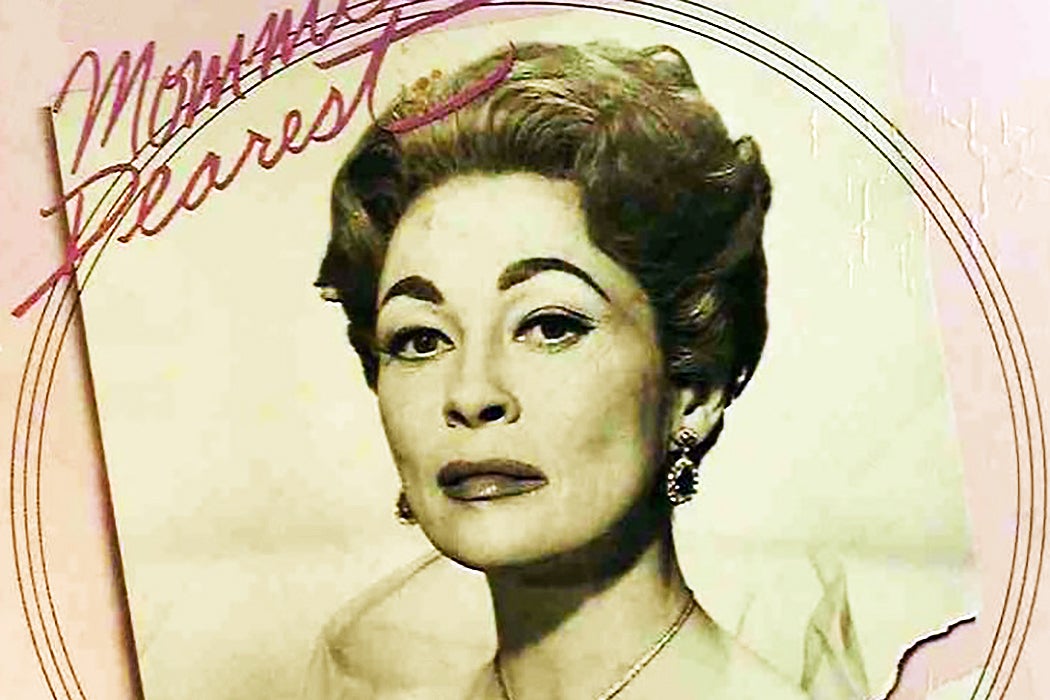“No…wire…HANGERS!” It’s a line even people who have never seen the cult film Mommie Dearest can chant, and the specter of a cold-creamed Faye Dunaway as a diabolical Joan Crawford from the campy, semi-biographical movie has become iconic. But don’t dismiss Mommie as a mere guilty pleasure, suggests Annette Brauerhoch: The film reveals some of society’s fundamental anxieties about mothers and powerful women.
For Brauerhoch, the film’s fascination lies in the way it uses melodrama and horror tropes to ask whether a mother’s love can ever be authentic. Long neglected by critics, the film uses Dunaway’s Crawford as a screen on which to project questions about authenticity of motherly intentions, women, and even movie stars.
In case you’ve never seen the movie: It’s the adaptation of a biographical exposé of Crawford written by her adoptive daughter, Christina. The film follows Joan’s transformation from difficult movie star to monstrous mother—a woman who belittles, punishes, and competes with her daughter at every turn. And it relies on the devices of horror films to do so: from nervous camera movements to grotesque revelations of Crawford’s scary, mask-like face to weird, lingering close-ups, it’s more akin to a Halloween flick than you might think.
As Brauerhoch points out, it shows Crawford as a woman who assumes her motherly mantle in the same way as she wears her stardom. Outside, it’s all beautiful family pictures and photo ops, but on the inside it’s anything but perfect. Narcissistic, abusive Joan steps on her daughter at every turn, and the audience laps it up.
To Brauerhoch, that’s problematic. “There seems to be a kind of masochistic pleasure in siding…against the figure of a strong mother,” she writes—especially since that view only allows a one-sided view of Crawford. She draws parallels to the decades of weepies and women’s films—melodramas that turn women into one-dimensional vessels for suffering.
Brauerhoch focuses in on the way Mommie portrays Joan’s obsessive, even demented pursuit of beauty. That quest makes sense given the outsized pressures Hollywood and society put on aging women, but in the film it’s the stuff of horror. Crawford’s face is portrayed as a gruesome mask, her beauty rituals as forms of torture. Her beauty is her armor, and the beast beneath is a place to dump our dread of woman’s ambition. Horror movie tropes, like scenes that happen in the overexaggerated shadows of night, nonstop suspense over what the monstrous Crawford will do next, and the fear of what might happen if Mommie Dearest’s evil ways are ever discovered by others, heighten and underscore that terror.
Viewed on the surface, Mommie Dearest is a portrait of vanity and self-obsession run riot. Brauerhoch encourages us to look beneath the mask and acknowledge society’s discomfort with mothers and powerful, single women. “In this film,” she concludes, “we find the mother figure submitted to the patriarchal, confining powers of genres and their laws and conventions: in other words, to melodrama and horror.”







